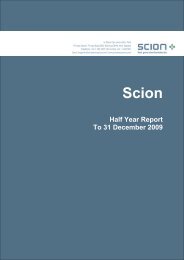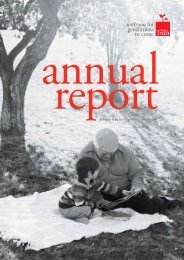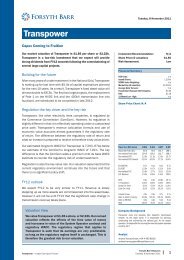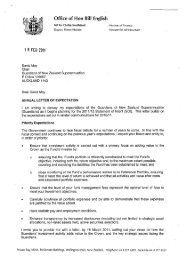MetService - Annual Report 2011 - Crown Ownership Monitoring Unit
MetService - Annual Report 2011 - Crown Ownership Monitoring Unit
MetService - Annual Report 2011 - Crown Ownership Monitoring Unit
Create successful ePaper yourself
Turn your PDF publications into a flip-book with our unique Google optimized e-Paper software.
We’re here to talk about...<br />
Dodging<br />
ash clouds<br />
When Chile’s Puyehue volcano belched ash into our<br />
airspace in June and July, <strong>MetService</strong>’s robust monitoring<br />
enabled Air New Zealand to keep flying safely.<br />
<strong>MetService</strong> had just 36 hours warning<br />
that the ash was heading our way. The<br />
southern Andean mountain erupted with<br />
the power of 70 atomic bombs, expelling<br />
one hundred million tonnes of ash, sand<br />
and pumice stone into the atmosphere.<br />
Wind blew the cloud eastwards where<br />
it shut down most of South America’s<br />
air traffic before drifting across the<br />
southern oceans towards Australia and<br />
New Zealand. <strong>MetService</strong> models that<br />
predict the dispersal of volcanic ash<br />
were configured for local eruptions; ash<br />
from half a hemisphere away was new.<br />
<strong>MetService</strong> immediately made contact<br />
with the airlines, Civil Aviation Authority<br />
(CAA) and Airways. Two forecasters<br />
worked extra shifts to bolster our<br />
12-strong aviation forecasting unit,<br />
which doubles as one of the world’s<br />
nine Volcanic Ash Advisory Centres<br />
(VAAC). They kept in close contact<br />
with their colleagues in Darwin VAAC<br />
and marshalled data from weather<br />
models, satellites and ceilometers<br />
that shoot lasers skyward to detect<br />
atmospheric particles.<br />
Pilot observation was helpful too.<br />
However, calls from the flight deck<br />
became scarcer as international<br />
flights were cancelled. What some<br />
pilots initially thought was volcanic<br />
ash turned out to be haze.<br />
<strong>MetService</strong> collated and verified<br />
every scrap of information about the<br />
ash cloud according to clear protocols.<br />
For more than a month, we issued<br />
advisories and SIGMETs (the equivalent<br />
of severe weather warnings) to CAA<br />
and the airlines.<br />
With the ash cloud verified at 30,000ft,<br />
Air New Zealand flew under it and<br />
re-routed some flights, absorbing the<br />
extra fuel costs. No planes encountered<br />
the ash cloud and there were no safety<br />
incidents. When we predicted the ash<br />
would drift down to 10,000ft over the<br />
South Island, the airline grounded a<br />
handful of domestic flights, its only<br />
cancellations.<br />
When the skies eventually cleared,<br />
CAA thanked <strong>MetService</strong> for “excellent<br />
and rapid support” in observing and<br />
validating the ash and keeping the<br />
aviation industry informed. “Forecasters<br />
handled this event in a thoroughly<br />
professional and timely manner,”<br />
said Keith Mackersy, CAA’s Technical<br />
Consultant, Meteorology. New Zealand’s<br />
flying public were the winners.<br />
2<br />
Meteorological Service of New Zealand Ltd <strong>Annual</strong> <strong>Report</strong> <strong>2011</strong>

















